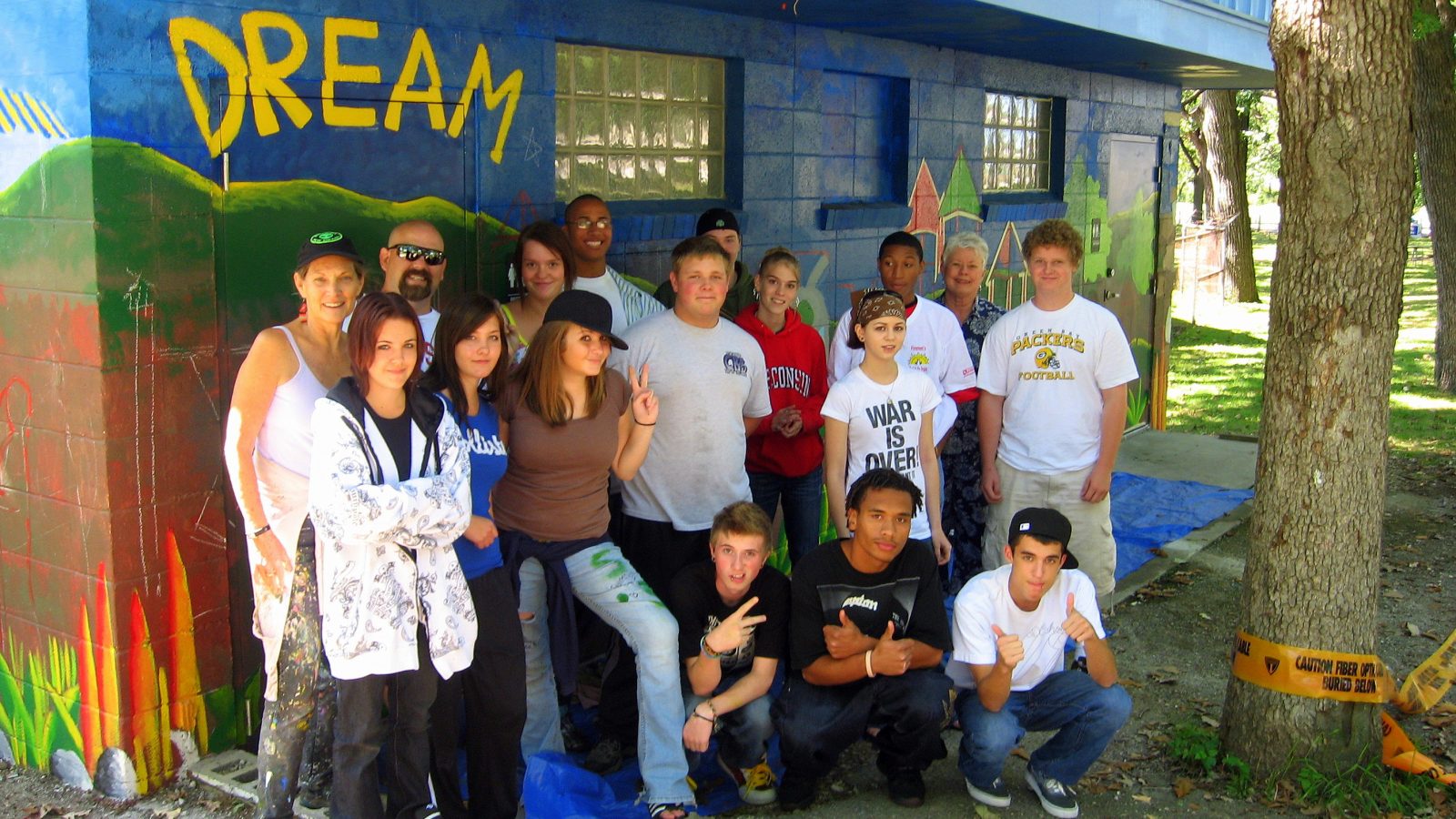Murals can be painted with classroom students, neighborhood center participants or other community groups. Each person can contribute to the mural at their level of ability. I have worked with children as young as 4. Depending on skill levels, students can help with various parts of the mural – younger children can help with priming and creating a background, while older children and adults can help with detail. One of the best things about painting a mural is that it fosters cooperation. I recommend NEVER break the mural up into individual sections – like a quilt – one per student. You will be missing a great opportunity to teach your students to work cooperatively, developing a design and making a mural together.
If you are inviting a muralist to work with your group, it is best that your group develops a theme, not the muralist. The muralist will work with your group to foster a sense of community and further the goals of the theme by leading your group in the cooperative project, but the theme should reflect your group and your unique community. When working with a school, I usually visit all of the classrooms, and discuss the theme with the students. This can also be done in an assembly.
You want to solicit design ideas from the greatest number of participants possible. You can set up “mural idea drop boxes” in the school office, the neighborhood center, or at local businesses. USE AS MANY OF THE IDEAS AS POSSIBLE IN THE DESIGN. Do NOT choose one design – like a contest – you will loose the chance to build inclusion into the design process. Your muralist or someone who has drawing skills should use all the design ideas submitted, and form them into a coherent design. Many elements can be added to your mural as it develops, but a strong overall sense of design is often best accomplished by one person or a limited group. This is a step that usually cannot accommodate many people. Make sure the muralist knows if there are certain elements that are particularly desired. Also discuss censorship with the muralist. Certain elements, such as gang or religious symbols might not be appropriate for your mural.
After a preliminary design is developed, it can be put on display for community input. A slide show introducing the history of murals can also be helpful. I have been invited by some groups to show slides of my murals and talk about mural making, but not lead the mural project. These have mainly been college groups. Some schools choose to have a “core” group of particular students work closely with the muralist, although I particularly enjoy working with kids who might not typically “shine” in the usual classroom setting. Some elementary schools have only 4th and 5th graders paint a mural – a “rite of passage” as one reaches a higher grade.
Neighborhood centers or community groups can work with a muralist during “community paint days.” Publicize these well. Mural dedications are great opportunities to celebrate the school, neighborhood center, or community group. They are also opportunities to invite local dignitaries to visit, and to get press/TV coverage for the school or group.
